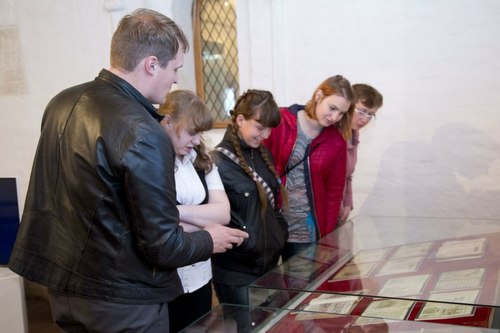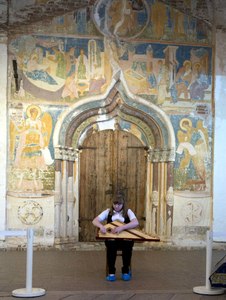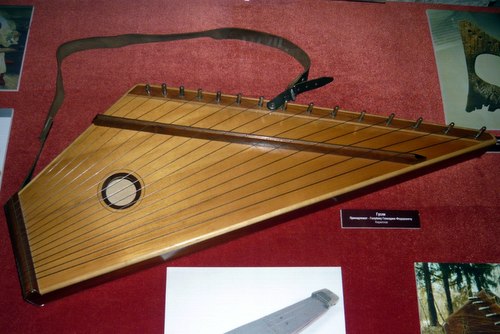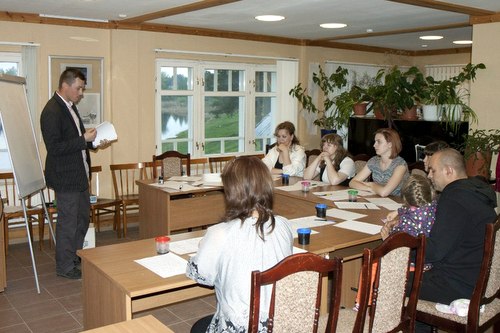“Night at the Museum” is an annual international action the main goals of which are to attract attention of the public, in particular children and youth, to the museum resources, to demonstrate the potential of modern museums and to excite interest in culture. This action took place for the first time in Berlin in 1997. In 1999, it was held in France on the initiative of the Ministry of Culture and Communication, but it had another name – “Spring of Museums”. It was scheduled for May 18 - the International Museum Day is celebrated on this day. 39 countries of Europe and America participated in the event in 2001. In 2005, “Spring of Museums” developed into “Night of Museums”. The first cultural institution of Russia that opened its doors for visitors at night in 2002 was the Krasnoyarsk Museum Centre. Museums of Moscow joined the action in 2007 and of St. Petersburg – a year later. Every year more and more people try to participate in the action “Night at the Museum” and thus join to history and culture.


The Museum of Dionisy’s Frescoes didn’t stand aside and opened its door for visitors in the evening for the fourth year running. The presentation of the books from the museum holdings opened the action of 2015 that took place on May 16. The collection of manuscripts and printed books numbers about 1500 items and is the second one in the Vologda region (after the Kirillo-Belozersky Museum). Curator V.N. Novozhilova told visitors about formation of the book collection and about the displayed works. Original books can be seldom seen in the permanent exhibitions because they require special conditions. But that evening everybody had such a chance. The hand-written book of the early 19th century “The Life of Saint Basil the Younger”, “Passions of Christ” (late 19th – early 20th centuries) and “Simeon, Heiromonk and Archimandrite. Description of Jerusalem” (1824) were presented in the show-cases in the parvis of the Refectory. They are notable for very colorful illustrations the photos of which could be viewed on a touch screen. For example, “The Life of Saint Basil the Younger” contains 90 miniatures – it is the only manuscript from the holdings of the Museum of Dionisy’s Frescoes that has so many bright water-colours.
Visitors were also interested in the contents of the above-mentioned book. Guide N.A. Chistyakova and I.N. Parshukova, director the Museum of Dionisy’s Frescoes, told about them. This literary work is about 20 aerial toll houses - spiritual trials that the soul of every baptized person is to stand during 40 days after the death.
The action “Night at the Museum” continued with an opening ceremony of the display “History of One Exhibit – Gusli” in the parvis of the Nativity of the Virgin Cathedral. It was about the most ancient and popular musical instrument of the Russian people. The gusli could be of different size and form and had a various number of stings. They were made of different kinds of timber, but more often sycamore maple was used. Y.A. Kivelev, head of the Excursion and Instruction Department, and Angelina Gorbunova, employee of the Vologda Regional Training School of Culture, reported the museum guests about development, manufacture and peculiarities of this musical instrument that was mentioned in epic, songs, fairy tales and numerous ancient secular and church manuscripts. Gennady Golubev, famous musician of Kirillov, taught Angelina to play the gusli. His gusli was exhibited in the show-case as a modern example of this Russian folk instrument. Book illustrations presenting gusli players and gusli of different epochs and countries alternated on a touch screen. For example, everybody could compare the Russian gusli with the ancient Latvian musical instrument kokle that was often mentioned in the folklore. Some photographs for the exhibition were given by Anton Kamensky and Artyom Kolesnikov.

People could also listen to some folk-tunes when Angelina Gorbunova played the gusli. Besides, she gave a couple of lessons for everybody who wanted to act as gusli-players.
2015 is announced the Year of Literature in Russia and a number of events of the action “Night at the Museum”, including the interactive lesson “Ligature Script of the Name” that was conducted in the administrative building of the museum, marked it. By the example of the Dionisy’s frescoes of the 15th-16th centuries, its participants learned about this Cyrillic ornate lettering. S.V. Bunin, head of the sector “School of Dionisy”, told them about the main principles of the ligature script, the principles of its use in the icon-painting of the Dionisy’s school and the origin and meaning of Russian names. During the lesson, very young and adult guests of the museum wrote intricate letters, their own names and created unique initials with pen and ink.

The permanent exhibitions of the museum were open till 22:00 and everybody could visit them free of charge. Guests from Kirillov, Vologda and local residents used this opportunity in spite of dull, but warm weather. They admired the Dionisy’s frescoes in the Nativity of the Virgin Cathedral and learnt about the history of the monastery in the Refectory and the Church of St. Martinian.







